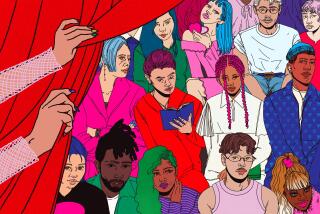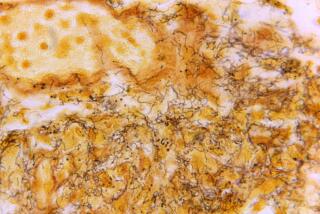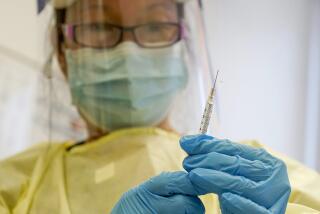Study: Gay men spreading AIDS at alarming rate
ATLANTA — Gay men too young to remember the earliest reports of AIDS are now spreading the disease at alarming rates that remind health officials of the explosive first years of the epidemic.
A government survey released May 31 shows 4.4 percent of gay and bisexual men ages 23 to 29 are newly infected each year with HIV, the virus that causes AIDS.
The survey, timed to mark the 20th anniversary of the discovery of AIDS, is the government’s most sweeping evidence yet of a resurgence in the disease among young gay men.
It suggests even more staggering infection rates for blacks in that group: 14.7 percent -- one in seven -- become HIV-positive each year.
Left unchecked, the infection rates for gay and bisexual men threaten years of progress the country has made to control the spread of HIV/AIDS, analysts for the Centers for Disease Control and Prevention said.
``The numbers we’re publishing right now are more like the findings you see in the ‘80s than the findings you see in the ‘90s,’’ said CDC’s Linda Valleroy, who led the survey.
The study included nearly 3,000 gay and bisexual men who were tested anonymously for HIV from 1998 to 2000 in Baltimore, Dallas, Los Angeles, Miami, New York and Seattle.
Government analysts acknowledged the data could be flawed: The men were recruited only at dance clubs, bars, city shopping centers and gay-and-lesbian community centers, so the true rates for all young gay and bisexual men could be higher or lower.
The government’s effort to contain HIV/AIDS may be cursed by its own success, CDC analysts said. New HIV infections have leveled off in America at about 40,000 a year, and improved medicine allows AIDS patients to live longer and healthier lives.
``People don’t perceive that you get infected and you die in two months anymore,’’ said Phill Wilson, executive director of the African-American AIDS Policy and Training Institute at the University of Southern California.
``There’s all these posters around that say you can climb mountains and do whatever with HIV and AIDS. There’s not enough messages about the price you have to pay,’’ he said.
Health officials expressed extreme concern about the high new-infection rates among young black gays and bisexuals, saying the stigma in the black community of having HIV or AIDS may be keeping testing rates low.
There are no comparable historical data on infection rates for young black gays and bisexuals. The one-in-seven infection rate in that group is roughly the same as current infection rates in South Africa, Valleroy said.
The CDC wants to cut the number of new infections nationwide to below 20,000 in five years, chiefly by improving prevention programs, targeting them more narrowly to the communities most at risk, and urging more Americans to get tested for HIV.
A key part of that effort will be getting to young gays and bisexuals to remind them of the disease’s devastation and the risk that continues even in the wake of improved medicine and safe-sex efforts.
``We have to stop and take a look at the devastation that potentially could occur among these young men,’’ said Helene Gayle, the CDC’s AIDS chief. ``These are precious and important lives.’’
Since the discovery of AIDS -- first reported in a 1981 government health bulletin as a strange form of pneumonia -- there have been about 750,000 reported cases in America. Nearly 450,000 of those patients have died.
``We’re not visiting as many dying bedsides, and we’re not going to as many funerals,’’ Wilson said. ``But we are tired of losing our friends, and it’s not over.’’
More to Read
Get the L.A. Times Politics newsletter
Deeply reported insights into legislation, politics and policy from Sacramento, Washington and beyond. In your inbox three times per week.
You may occasionally receive promotional content from the Los Angeles Times.










